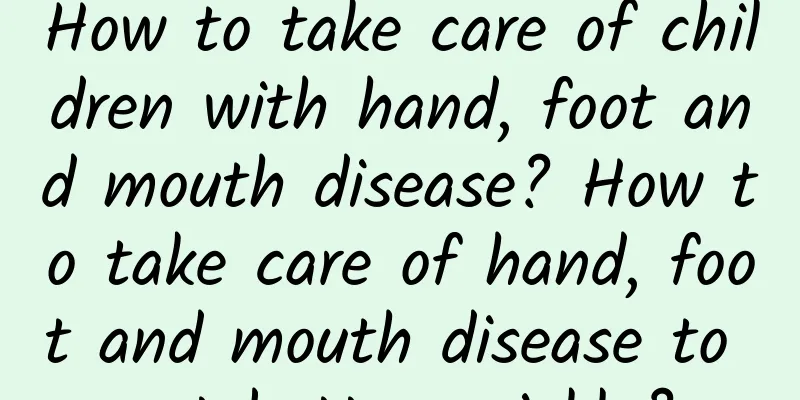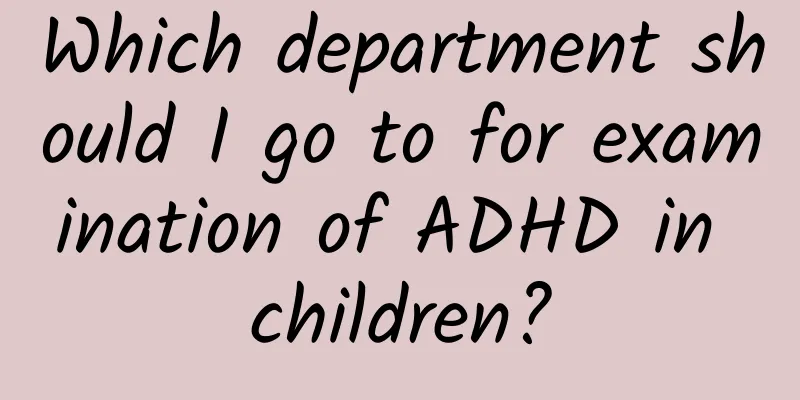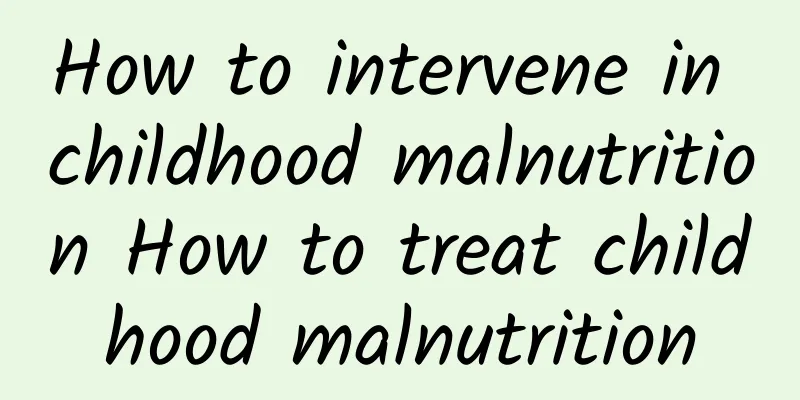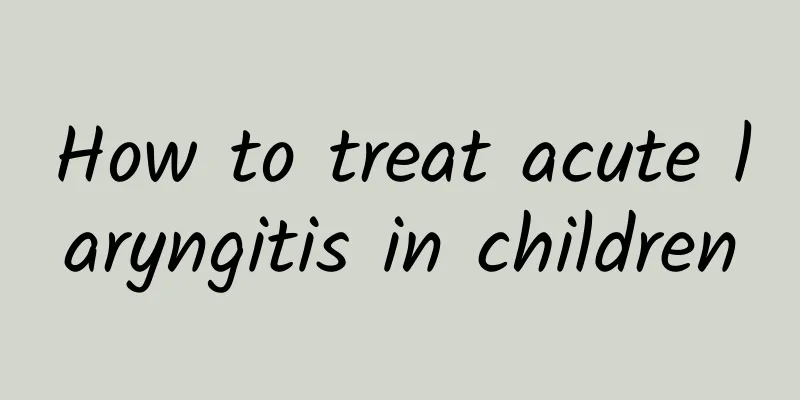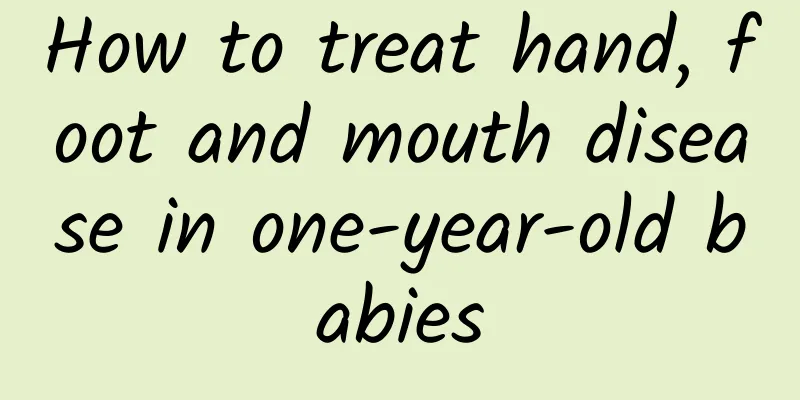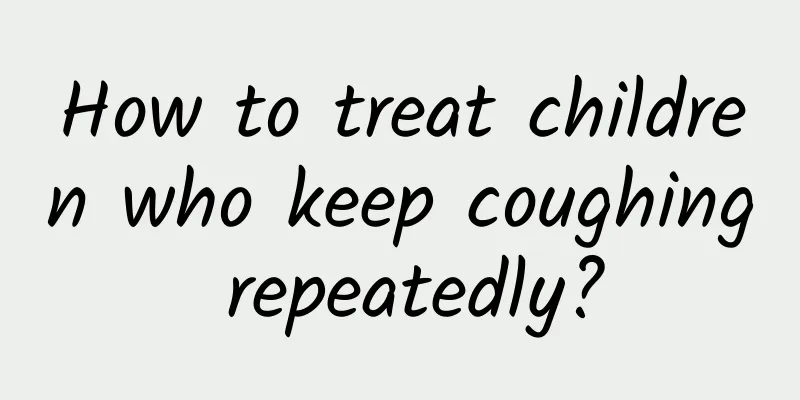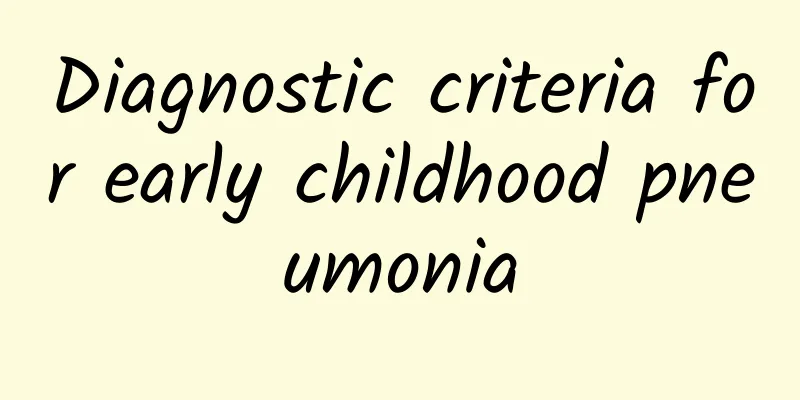What are the symptoms of pneumonia in children? What are the daily dietary taboos for pneumonia in children?
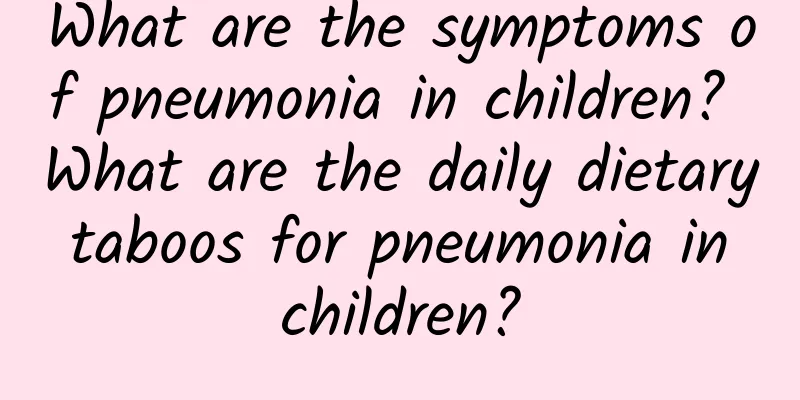
|
In the daily process of parenting, pediatric pneumonia is a common disease in life, and this disease can also give our parents a headache. For the baby, while actively treating it, it is also necessary to adjust the diet. Symptoms of pneumonia in children Fever: Children with pneumonia usually have fever symptoms, with body temperatures above 38°C for two or three days. Antipyretics can only temporarily reduce body temperatures for a while, and then they rise again soon. Although children with colds also have fever, their body temperatures are mostly below 38°C and last for a short time, so the effect of antipyretics is more obvious. But at the same time, we should also be wary of pneumonia in children without fever. Babies with pneumonia may have a very high body temperature, but they may not have a fever, or even have a lower temperature than normal. The duration of fever cannot be used as a basis for judging pneumonia. Some babies develop pneumonia after only two days of fever, while some babies have a fever for a week and it is not caused by pneumonia. Therefore, fever alone cannot determine whether a child has pneumonia, and it needs to be judged in combination with other aspects. Cough and breathing: To determine whether the child has pneumonia, it is necessary to see whether the child has cough, wheezing, and difficulty breathing. Cough and wheezing caused by colds and bronchitis are mostly paroxysmal, and generally do not cause difficulty breathing. If the cough and wheezing are severe, the respiratory rate increases when at rest (i.e., infants under 2 months old have a respiratory rate of ≥60 times/minute; infants 2-12 months old have a respiratory rate of ≥50 times/minute; children 1-5 years old have a respiratory rate of ≥40 times/minute), the nostrils on both sides open one by one, and the lips turn blue or purple. Once the above symptoms appear, it indicates that the condition is serious and should not be delayed. More than 50% of the pathogens of viral pneumonia are respiratory syncytial virus, which accounts for one-third of the total number of hospitalizations for pneumonia in children. It is more common in winter and spring. The most typical age of onset is 6 months to 3 years old. These children often have an acute onset, first with "cold" symptoms, which last for about 3 days, and show a low fever (measured body temperature at around 38°C), clear nasal discharge, and cough. About 60% of children may not have a fever. After 2-3 days, the cough worsens, and the breathing becomes fast and shallow, up to 60-100 times per minute. The most prominent symptoms are wheezing, holding back, and prolonged exhalation. Sometimes the sound of wheezing can be heard without a stethoscope, as long as you are close to the child, and the child is in great pain. Mental state: In order to detect pneumonia in children in time, careful mothers should also pay attention to the mental state of their children. If the child is in good spirits, can play, and loves to laugh while having a fever, coughing, and wheezing, it indicates that the child is unlikely to have pneumonia. On the contrary, if the child is in a poor mental state, has blue lips and lips, is irritable, cries, or is drowsy, has convulsions, and a few children may have delirium, it means that the child is more seriously ill and is more likely to have pneumonia. In the early stages of pneumonia, the child may not have obvious mental changes, or he may be in a poor mental state. Appetite: Pneumonia can significantly reduce appetite. Children with pneumonia will not eat or will cry and be restless when feeding. If the child is diagnosed with pneumonia, breastfeeding and feeding should continue, and the child should drink more soup. If the child has a decreased appetite, small meals should be taken frequently. Breastfeeding infants should increase the number of feedings per day to enhance nutrition and physical strength. Chest: Because children's chest walls are thin, sometimes bubbling sounds can be heard without a stethoscope, so careful parents can listen to their children's chests when they are quiet or asleep. When listening to a child's chest, the room temperature must be above 18°C. Take off the child's shirt, gently place your ears against the chest wall on both sides of the child's spine, and listen carefully. Children with pneumonia will hear "gurgling" and "gurgling" sounds when they inhale. Doctors call them fine bubbling sounds, which are important signs of lung inflammation. At the same time, carefully observe whether the child has chest depression (when inhaling, the edges of the ribs on both sides are sunken and rise and fall with breathing). If this happens, the child needs to be sent to the hospital immediately for diagnosis so that timely treatment can be provided. Below are some daily dietary taboos for children with pneumonia for your reference. 1. Avoid greasy and heavy foods Children with pneumonia often have low digestive function. If they eat greasy and heavy food, their digestive function will be affected, and the necessary nutrients will not be replenished in time, resulting in reduced resistance to disease. Therefore, they should not eat cod liver oil, pine egg yolk, crab roe, phoenix tail fish, crucian carp roe, and animal offal. If they drink milk, the upper oil film should be removed, and nursing mothers should also eat less greasy food to avoid aggravating the condition. 2. Avoid high-protein diet The main components of lean meat, fish and eggs are proteins. 1 gram of protein absorbs 18 milliliters of water in the body, and the final product of protein metabolism is urea. Children who eat more protein will excrete more urea, and every 300 milligrams of urea excreted will take away at least 20 milliliters of water. Therefore, children with high fever and dehydration should avoid eating high-protein diets, and they can supplement them appropriately in the later stages of the disease to improve their physical fitness. 3. Avoid eating foods containing polysaccharides Sugar is a calorie supplement with a simple function and basically contains no other nutrients. If children with pneumonia eat more sugar, the bactericidal effect of white blood cells in the body will be inhibited. The more sugar they eat, the more obvious the inhibition will be, which will aggravate the condition. 4. Avoid spicy food Spicy foods are very irritating and can easily generate heat and damage body fluids. Therefore, children with pneumonia should not add chili oil, pepper, and spicy condiments to their diet. 5. Avoid eating raw or cold food If you eat too much raw and cold food such as watermelon, ice cream, frozen juice, popsicles, popsicles, cold drinks, bananas, raw pears, etc., it is easy to affect the Yang energy in the body. If the Yang energy is damaged, it will be unable to resist evil and the illness will be difficult to cure. Therefore, you should avoid eating it, especially for children with gastrointestinal symptoms. 6. Avoid taking heat-clearing drugs randomly Heat-clearing drugs such as gold and silver tea, green fruit, and isatis root granules are beneficial to children with pneumonia. However, they cannot be taken for a long time, especially for those with weak constitutions. Otherwise, it will hurt the body's positive energy and aggravate the original symptoms. 7. Avoid drinking tea Children with pneumonia often have fever, so they should avoid drinking tea. Theophylline in tea can excite the central nervous system, keep the brain excited, and speed up the pulse and increase blood pressure. When a child has a fever, the body is in an excited stage where the positive and negative forces are fighting each other, and the pulse is fast. Drinking tea will stimulate the myocardium and increase consumption, which will not only fail to reduce fever, but will also increase body temperature and induce other diseases. In addition, the tannic acid in tea has an astringent effect, which Chinese medicine believes is not conducive to the dissipation of evil spirits on the skin surface, and is also not suitable for children with fever. |
>>: How to prevent jaundice in newborns? Five tips to prevent jaundice in newborns
Recommend
Effective methods to prevent pneumonia in children
If you don't pay attention when you have a co...
How to treat children's cough and asthma How to treat children's cough and asthma
Asthma is not a big or small disease. When there ...
Is it normal for a newborn to have jaundice level of 16?
Is a neonatal jaundice value of 16 normal? The no...
How does TCM treat diarrhea in children? 4 TCM methods to improve diarrhea in children
Infantile diarrhea is one of the most common dise...
Why does a child cough at night when he doesn't cough during the day?
Nowadays, many children cannot cough during the d...
Jaundice value comparison table 1 to 30 days
Neonatal jaundice is usually divided into physiol...
What to do if you are zinc deficient
Whether adults or infants, if the diet structure ...
How long does it take for breast milk jaundice to subside on its own?
Breast milk jaundice is a common type of jaundice...
What is the matter with the baby coughing but not fever? What should I do if the baby coughs but not fever?
Since there are many reasons why babies cough wit...
What is Pertussis Toxin? A Guide to Pertussis Toxin Diseases
What do you think about pertussis toxin? We only ...
Causes of acute suppurative parotitis
Causes of acute suppurative parotitis: The main c...
What is baby dry eczema? 5 methods of daily care
When babies are suffering from dry eczema, first ...
Are mumps and parotitis the same thing?
Are mumps and parotitis the same thing? 1. Mumps ...
What is the reason for cold body and cold limbs
The phrase "cold body and cold limbs" s...
How to treat pneumonia in children?
In addition to Western medicine, neonatal pneumon...
